Which of the following statements about the BGP Advertise External feature is FALSE?
Which of the following about the Isp-ping command on the Nokia 7750 SR is FALSE?
An Nokia 7750 SR receives a route from an eBGP peer with a MED value of 500. What
MED value is sent to iBGP peers?
Which of the following statements best describes the function of an OSPF Type 4 LSA?
Click the exhibit button.
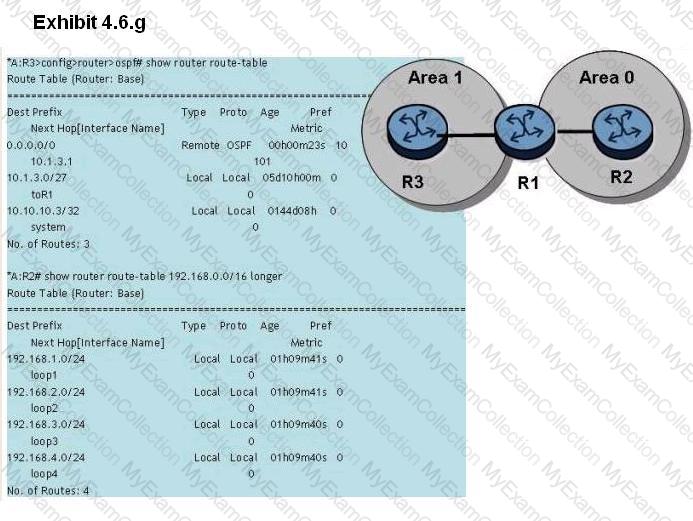
Given the topology and the show commands, and assuming that router R2 advertises all of its loopbacks into OSPF, what is the correct router R1 configuration?
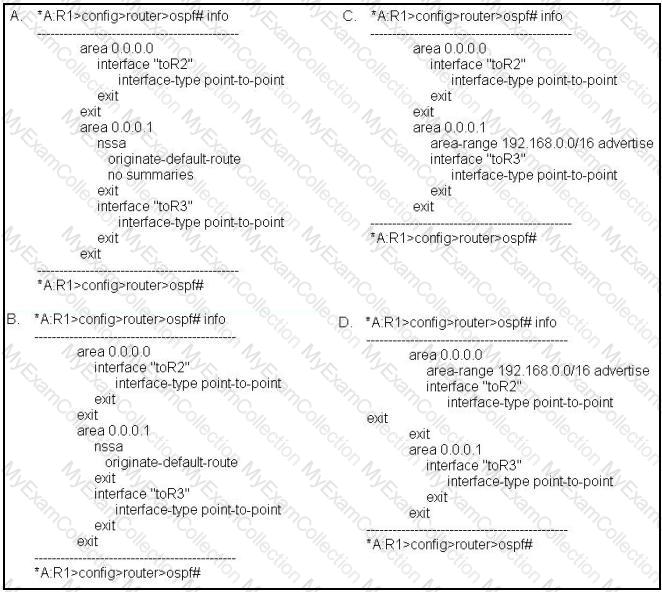
Click on the exhibit.
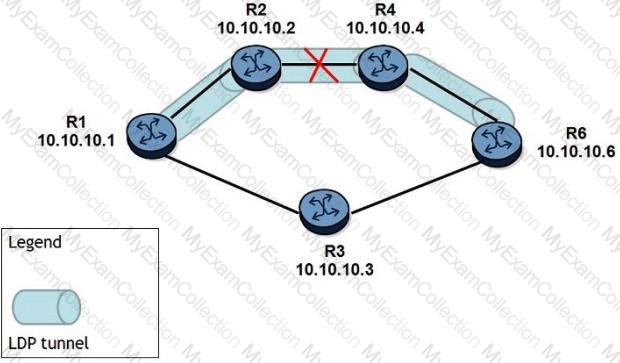
An LDP tunnel is established on router R1 towards router R6. The link between routers R2 and R4 goes down. What will happen to the MPLS data traffic to router R6 IMMEDIATELY after the link goes down?
On an Nokia 7750 SR, which vc-type will strip service delimiting tags at the ingress PE?
Which of the following best describes downstream on demand label distribution?
Click the exhibit button.
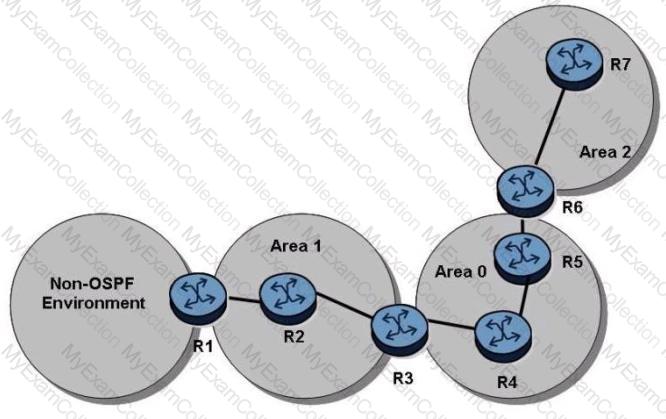
In the topology shown, router R1 is an ASBR configured to export external routes to OSPF. Assuming that there are no stub networks, which of the following statements regarding Type 4 LSA generation is true?
Click the exhibit.
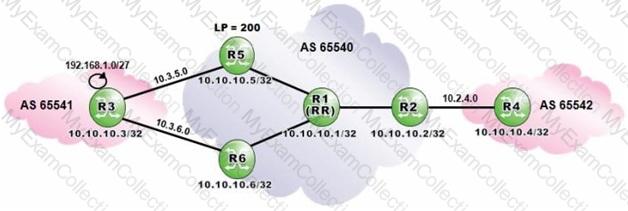
Router R1 is a route reflector with clients R2, R5 and R6. Prefixes advertised by router R5 have a local preference of 200. Router R3 advertises the prefix 192.168.1.0/27 to routers R5 and R6.
Assuming that router R6 is configured with "advertise-external", what is the expected output of "show router bgp routes" when executed on router R1?
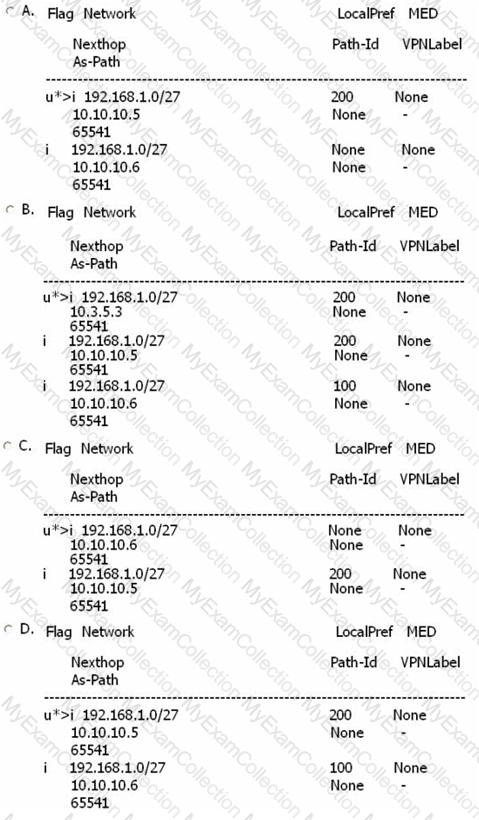
An operator configures an Nokia 7750 SR with a loopback interface and IPv6 address. The operator then configures a routing policy to redistribute the loopback prefix into OSPFv3. What type of LSA is used to advertise the route to other OSPFv3 routers in the same area?
Static routing will be used in a network between a corporate head office, with many connected networks, and a branch office, with one connection to the head office. Which of the following best describes the likely configuration?
What best describes the type of packets used by OSPF routers to exchange updates on a pointto-point link?
An interface is configured on a router for OSPF but the command "show router ospf neighbor" does not show any neighbors. Which of the following is NOT a possible cause?
Click the exhibit button.
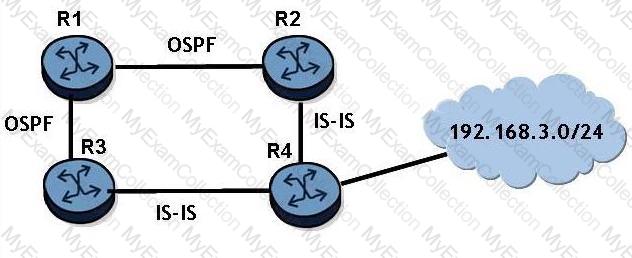
If router R2 redistributes the IS-IS route to 192.168.3.0/24 into OSPF, router R3 will receive two routes to 192.168.3.0/24. What will be the preference of these two routes? Assume that all IS-IS routers are L1/L2 capable and are in the same area. Choose two answers.
Click the exhibit.
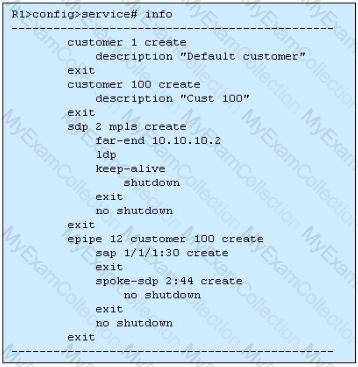
Which of the following statements about the E-pipe service is TRUE?
Which of the following statements apply to link state protocol behavior? Choose three answers.
Which of the following statements regarding Internet Exchange Points is FALSE?
Click the exhibit.
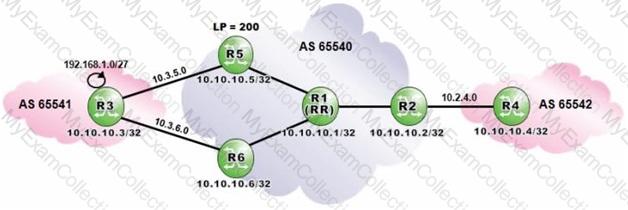
Router R1 is a route reflector with clients R2, R5 and R6. Prefixes advertised by router R5 have a local preference of 200. Router R3 advertises the prefix 192.168.1.0/27 to routers R5 and R6.
Assuming that none of the routers in AS 65540 is configured with "advertise-external", what is the expected output of "show router bgp routes on router R1?
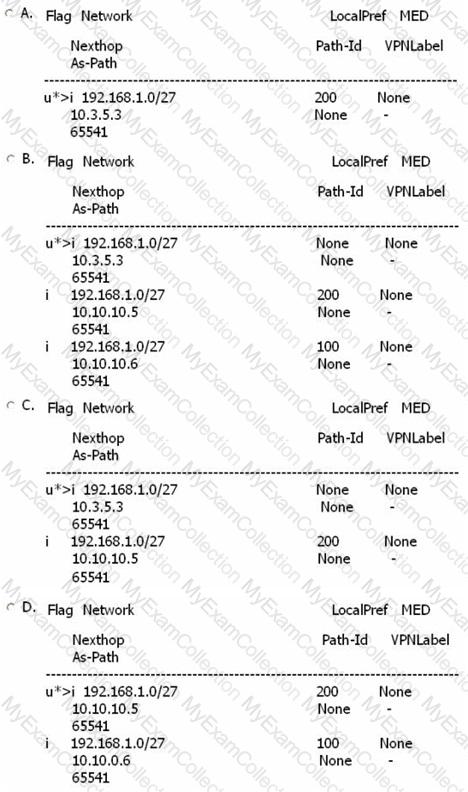
Click the exhibit.
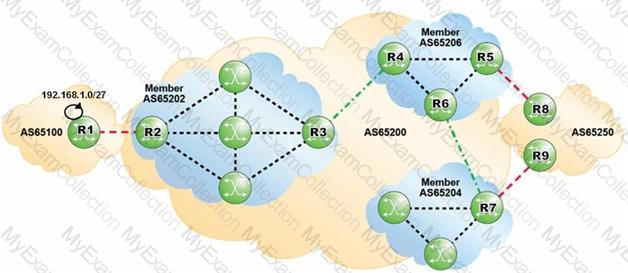
AS 65100 is advertising 192.168.1.0/27 into BGP. Which of the following AS Paths would the prefix 192.168.1.0/27 contain when viewed on router R7?
Click the exhibit.
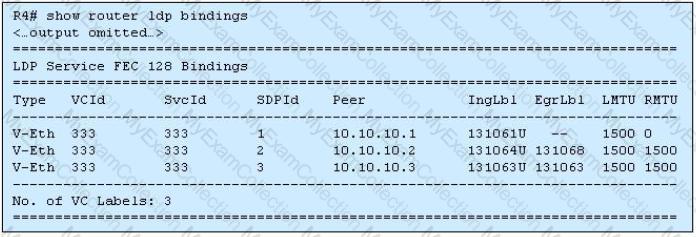
This is output from router R4. Service 333 is a VPLS. Why does peer 10.10.10.1 not have an EgrLbl?
An LSP is configured with one-to-one FRR and node protection on a Nokia 7750 SR. Which of the following is FALSE?
Click the exhibit.

Given the following configuration for router R1, what is the expected Next Hop for prefix 192.168.1.0/27 as seen on router R2?
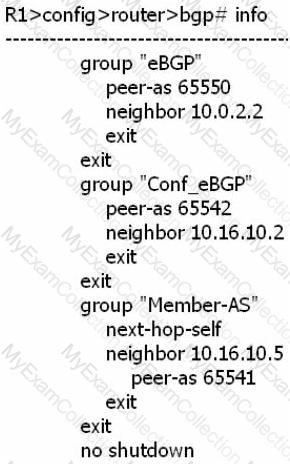
Which of the following about Fast Reroute link protection tunnels is FALSE?
When an OSPF adjacency is stuck in the "ExchStart" state, what is the most likely cause?
Click the exhibit.

Which of the following is a valid confederation configuration for Router R2?
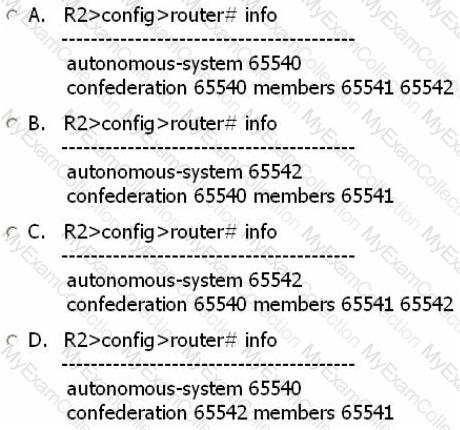
Exhibit
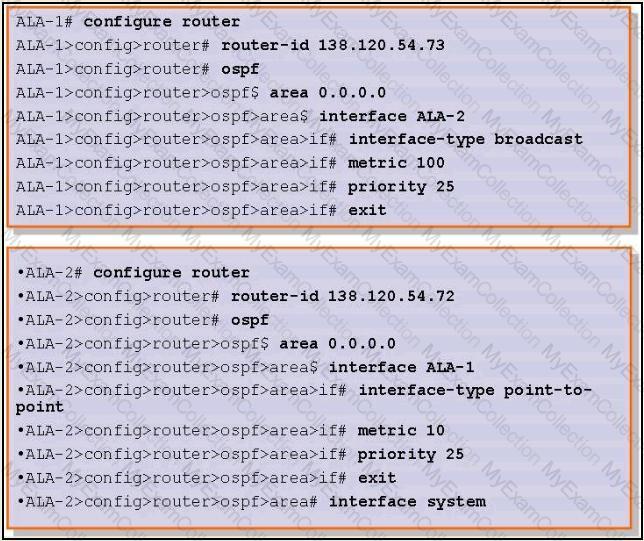
Given the two configurations shown, identify the two incorrect statements below: (Choose two)
Click on the exhibit.
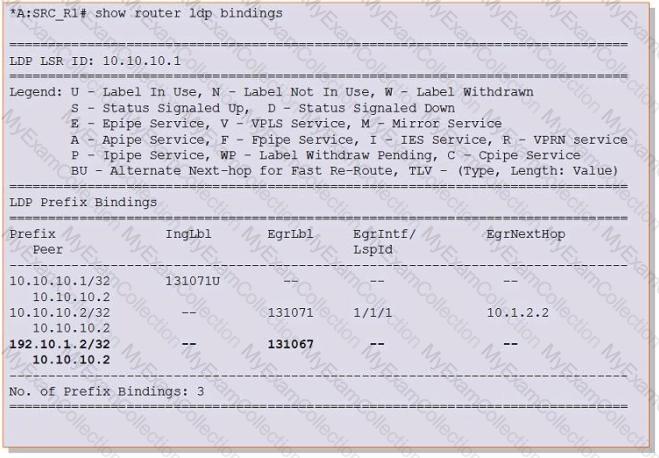
What is the possible reason that the label for prefix 192.10.1.2/32 is not active?
Which of the following statements regarding the election of the designated router (DR) by OSPF routers are true? (Choose two)


